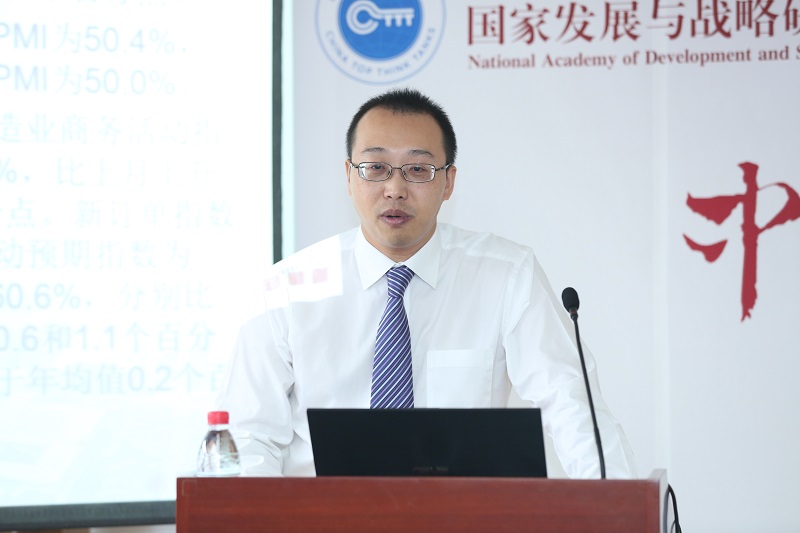 Research Update
Research Update
18
SepOn September 15, 2018, the Macroeconomic Monthly Data Analysis Reference of China Macroeconomic Forum, jointly organized by the National Academy of Development and Strategy of the People's University of China, the School of Economics, and China Credit Management Co., Ltd., was held at Renmin University of China. This meeting analyzed and interpreted the macroeconomic data of August 2018.

Liu Yuanchun, Vice President of Renmin University of China, Zhu Baoliang, Chief Economist and Director of Economic Forecasting Department of National Information Center, Wu Ge, Chief Economist and Assistant General Manager of Huarong Securities, Su Jian, Director of National Economic Research Center of Peking University, Liu Fengliang, Standing Deputy Dean of Graduate School of Renmin University of China and Yu Chunhai, Assistant to the Dean of the School of Economics of Renmin University of China, attended the seminar.

Yu Ze, a research fellow at the NADS RUC and a professor at the School of Economics of RUC, released a macroeconomic monthly data analysis report. The report pointed out that in the face of Sino-US trade frictions, African swine fever and floods, the macroeconomic performance in August was generally stable, reflecting that China's economic base is relatively stable, with high resilience and large swing space. In general, the cyclical risks of inflation and trade friction in China's economy that trigger import and export and investment fluctuations are inherently controllable.
The core problem facing our economy is the lack of sufficient endogenous motivation in the long run and the difficulty of re-entering self-sustainable growth. This long-term weakness will further amplify short-term risk factors in the trade friction environment and become the biggest source of risk. An important reason for the lack of endogenous motivation in the economy is a seemingly paradoxical phenomenon. Under China's unique capacity-expanding innovation model, after the rapid increase in the productivity of low-price flexible daily necessities manufacturing industry, there is no corresponding industrial upgrading. The rapid development of this sector has led to long-term economic downturn. The core orientation of future policy should be to promote the traditional manufacturing industry to advanced manufacturing and promote the development of modern service industry with accumulation nature. It is not a new economic model without capital and technology accumulation characteristics.
In this direction, tax cuts are better than expanding infrastructure, but they are not the most effective policies. Asset price revaluation, human capital training, and high transfer costs required for structural adjustment are not self-sufficient for the market. They require the government, especially the party’s involvement in economic management, to adjust the pattern of interests. The supply-side structural reform for transformation is the right choice, but in the implementation, it needs to shift from the upstream industry to reduce production capacity to focus on the downstream industry transformation which is close to the consumer side. Since the short-term risk itself is controllable, the biggest source of risk is the short-term impact of the transition delay, so the macro-policy should pay more attention to the industrial transformation while paying attention to the short-term, pay attention to the industrial effect of the macro-policy, and promote the industrial upgrading as the basis of judgment policy.
The guests conducted in-depth discussions and comments on the August macroeconomic data and analysis reports, and each published a wonderful point of view and put forward targeted policy recommendations.